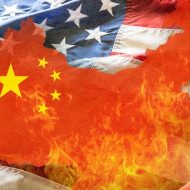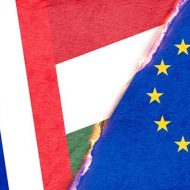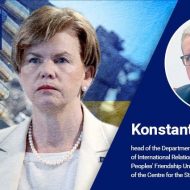By Recep Erçin
After an intense election marathon, Türkiye focused on the economy. The question mark on the minds after the selection of the economic management by President Erdoğan is whether the Turkish Economic Model will be abandoned or not!
Türkiye experienced a “bright” period with the IMF policies implemented after the 2000s. When we look at what it was for, we see 60 billion dollars of public resources sold, the share of the manufacturing industry falling to 15 percent by 2010, and billions of dollars of additional foreign debt.
After 2018, under the leadership of Berat Albayrak, Türkiye switched to a different model to generate a current account surplus. In fact, the transition to this model was a necessity due to the active fight against terrorism that started after July 2015 and the cut-off of financing from the West in the face of the policy of strengthening regional alliances.
Things are not as they seem
The total foreign debt of the country, which Ali Babacan took from $275 billion in 2009 to $408 billion in 2015 and Mehmet Şimşek took it from there to $448 billion at the end of the second quarter of 2018, increased by only $11 billion in the 4.5 years after Şimşek. During the period with Simsek and Babacan, 173 billion dollars of additional borrowing was made.
Let’s look at some macro indicators.
The share of the manufacturing industry in national income has increased from 17 percent to 22 percent in the 2018-2023 period, when Türkiye was trying to get out of the borrowing economy, that is, only 11 billion dollars of additional borrowing was made.
Türkiye’s private sector’s foreign exchange open position decreased from $188 billion to $90 billion thanks to the “$128 billion” sold. The short-term net foreign exchange position reached a surplus of 62 billion dollars. In other words, the reserves sold helped the balance sheets of the private sector.
Türkiye’s net international investment position, defined as the difference between Türkiye’s assets abroad and its liabilities abroad, decreased from minus USD 442.5 billion at the end of 2017 to minus USD 247.4 billion at the end of March 2023. Its ratio to national income dropped from 50 percent to 25 percent.
Debt will reach the trillion
During the period of easy money, Türkiye shifted from an economic approach that weakened the existing manufacturing industry, let alone transforming it, to an approach that increased domestic production during the expensive financing period.
However, the Turkish economic model was challenged by the negative effects of the coup attempt, the impact of regional wars, the global inflationary process, the Covid-19 pandemic, local banking crises on the external balance, and the exchange rate shocks caused by political pressures on interest rate policy. The production economy discourse was supported by science-based education that would train the appropriate labor force, and when investments that would raise the technological level could not be brought in from abroad, the period of foreign debt payment hit the balance of payments wall when our grandmother’s silver ran out at home.
From this point onwards, a new setup will have to be made. While this is in the making, it should be taken into account that the cheap money period of 2002-2015 is over and that the world, which has become very multipolar politically, will also become Balkanized economically. Otherwise, with a new period of high exchange rates and low interest rates, we will find ourselves carrying a trillion dollar debt burden in the next “smartening” period.
Difficult decisions require patience
What needs to be done, then, is to put back on the table the proposals that Ali Babacan voiced before he left office in 2015 – “what comes from abroad can’t be the meal” – and Mehmet Şimşek voiced before he left office in 2018 – “repairing the roof while the weather is good”.
Although we see that the expectation is in this direction, it is important to see the reaction of labor-intensive enterprises and floating companies with weak equity, low technological level and low technological level, which are used to living on credit, to a series of steps to be taken, even if temporary, to “cool the engine”.
How many companies will survive a period of interest rate hikes and credit scaling back, how employment will be affected, whether the policies will yield results quickly, and most importantly, how this will resonate with the Presidential Palace – this all will give an idea about the duration of this period.









Leave a Reply